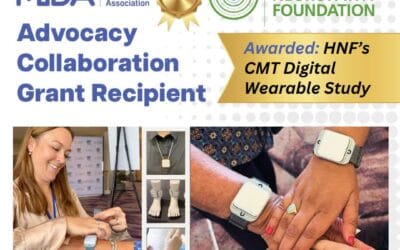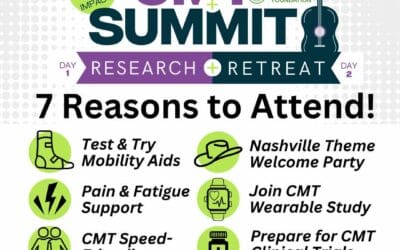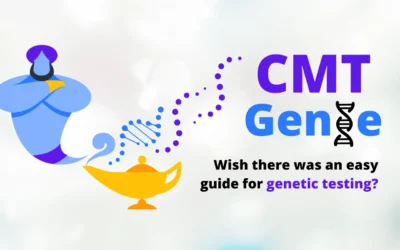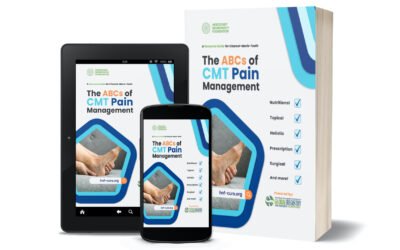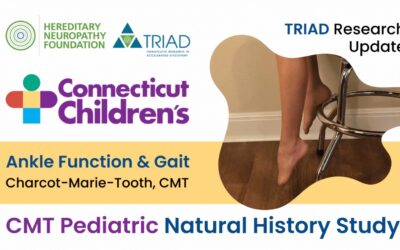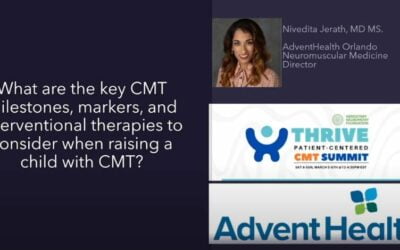HNF acknowledges that CMT is a childhood disease and advocates for early intervention to limit the progression of the disease. We need to prepare for pediatric clinical trials!
It’s important to document the impact of CMT on the quality of life in childhood.
Participate by confidentially sharing your child’s health data. Join HNF’s Global Registry for Inherited Neuropathies (GRIN) & complete the Natural History study, followed by the Pediatric Quality of Life survey.
Note: For your child to participate in this study, please complete the natural history study and health and development survey. Once those two studies are completed, you can bypass the other listed studies and select pCMT QoL.
CMT GRIN Stats
Did you Know?
%
Of CMT Patients Reported the Absence of Reflexes
As a pediatric neuromuscular specialist, I understand how critical it is to collect information from parents and caregivers on the challenges and delays they face to get their child diagnosed with CMT, presenting symptoms, similar health problems in the family and their interest in participating in clinical trials. GRIN patient registry collects such critical information needed to pivot the care provided for children with CMT to the next level.
CME Education for Credits
View The AANEM Charcot-Marie-Tooth Continuing Education Course for a detailed look at this CMT continuing education course.
Participants will acquire skills to:
(1) Diagnose CMT based on common symptomology;
(2) Discuss work-up and surgical treatment options for the very young to adults;
(3) Identify potential therapies and bracing that may improve quality of life for those diagnosed and their care-givers.
Data from GRIN shows pediatric patients ages 0-17 diagnosed with CMT are broadly affected with a wide spectrum of symptoms. CMT impacts quality of life starting in childhood. 22.3% of CMT patients experienced initial symptoms during early childhood, between ages 0 and 5 years. About half (50.5%) of CMT patients had symptoms onset before the age of 16 years. 55% of symptoms were noticed by family members before official diagnosis. See chart below.
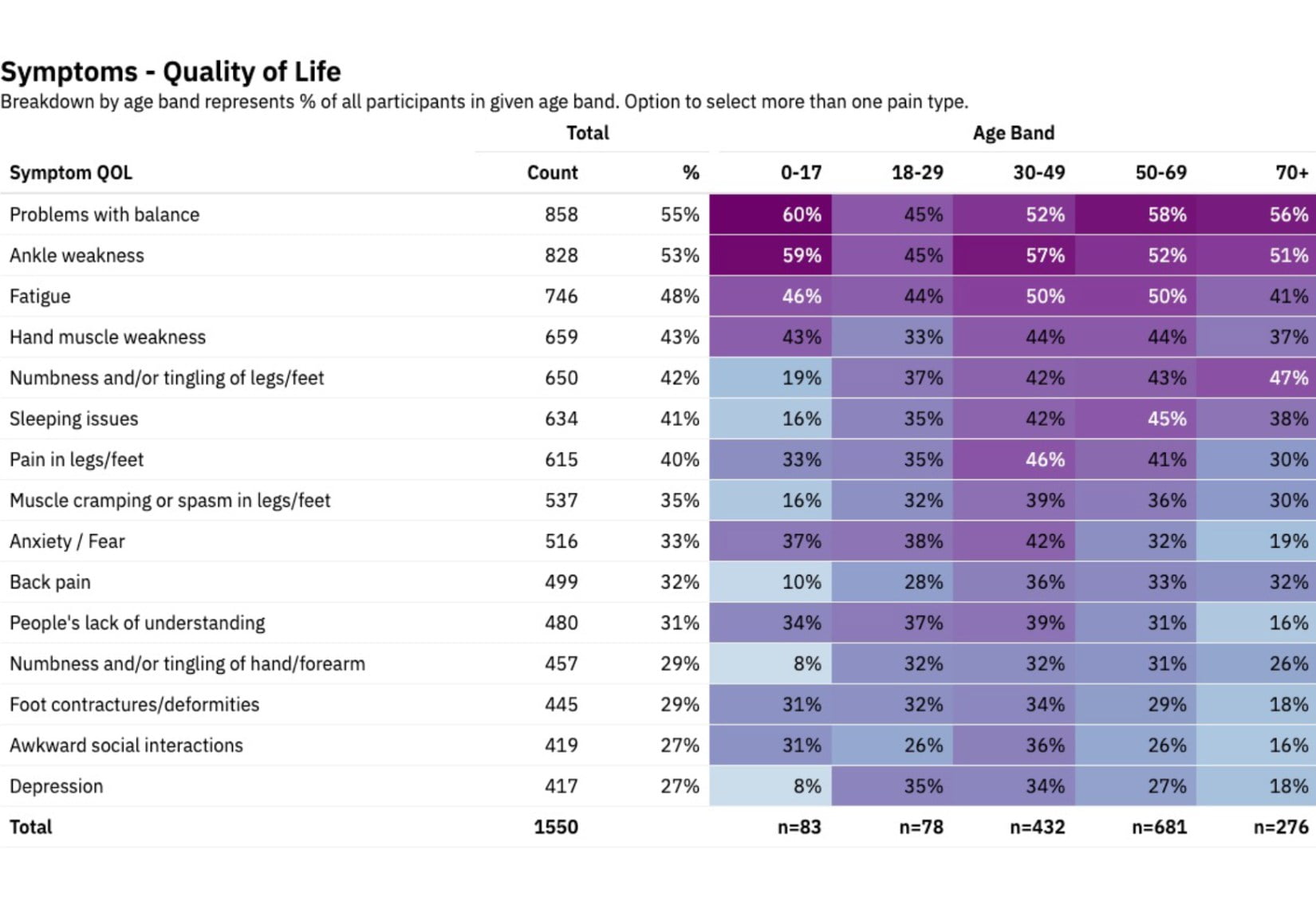
Kids Resources & Initiatives
Team CMT Kids
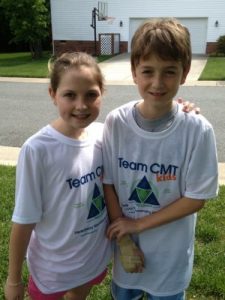 Founded 2013 encouraging kids to stay active, proudly wear their Team CMTkids shirt to raise awareness and funds for CMT research.
Founded 2013 encouraging kids to stay active, proudly wear their Team CMTkids shirt to raise awareness and funds for CMT research.
Amazon Wish List
HNF’s focus is to support people living with CMT and their families with critical information to improve their quality of life, and we are dedicated to finding treatments for CMT. We provide a strong organizational voice to those living with CMT worldwide.
The HNF team and supporters have curated an ULTIMATE wishlist of CMT-friendly products on Amazon to make life with CMT easier!
We hope you find this list helpful and choose HNF as your AmazonSmile Charity before you shop!
School Outreach Program
Launching discussions about CMT and disabilities in schools.
HNF believes that it is important for educators and other school professionals to know about CMT, given the importance of physical activity and services such as occupational therapy for kids growing up with the disease.
No Child Left Behind (NCLB)
NCLB seeks to ensure that all children have a “fair, equal and significant opportunity to receive a high quality education.” It requires that all groups of children make adequate yearly progress, including children with disabilities, and requires that teachers are highly qualified. Children taking standardized tests required by NCLB are entitled to the accommodations that are set forth in their 504 Plan or IEP. For kids with CMT, this might mean extra time on standardized tests or assistive technology.
Patient Focused Drug Development (PFDD) with FDA Kids panel hosted by HNF
In attendance were patients, caregivers, Government Officials, Healthcare Providers, Industry Representatives, and Payors.
The PFDD meeting was an opportunity for patients and families to inform the FDA, drug developers and other key stakeholders, on the true burdens of living with CMT and how patients view the benefits and risks of treatments for CMT. Included was a kids panel which amplified the voices of young patient’s.
Care Guidelines
Clinical practice guideline for the management of paediatric Charcot-Marie-Tooth disease
Other Resources
Please visit our Patient Resources, School & College segment for more resources including Webinars.
MDA Awards Grant to HNF for Groundbreaking Digital Wearable Study on CMT!
Exciting news for the Charcot-Marie-Tooth (CMT) community! The Hereditary Neuropathy Foundation (HNF) has been awarded an Advocacy Collaboration Grant from the Muscular Dystrophy Association (MDA) to further its groundbreaking work in CMT research. This funding will...
7 Reasons You Can’t Miss the Nashville CMT Summit
Mark your calendars for April 24–26, 2025, because the Nashville CMT Summit is bringing the ultimate blend of knowledge, community, and fun! Here are 7 reasons you absolutely need to be there: Test & Try Mobility Aids: Explore the latest tools to keep you moving...
Jaxson’s Clayshoot for Mito CMTs
Jaxson’s Clayshoot for Mito CMTs Among the various forms of CMT, mitochondrial CMT (Mito-CMT) represents a particularly challenging subset, where genetic mutations impact the mitochondria—often referred to as the powerhouse of the cell. For those living with Mito-CMT,...
Reducing Genetic Testing Barriers for the Charcot-Marie-Tooth Community
Hereditary Neuropathy Foundation Partners with InformedDNA® on CMT Genie Project
HNF Launches Groundbreaking ‘ABCs of CMT Pain Management’ Guide
"ABCs of CMT Pain Management" is now on Amazon! The Hereditary Neuropathy Foundation is thrilled to introduce the "ABCs of CMT Pain Management," a comprehensive guide. This guide embodies the power of collective stories through patient-reported data and an unwavering...
Pediatric CMT Natural History Study Enrollment Opening at Two Centers of Excellence
Pediatric CMT Natural History Study enhancement to their Charcot-Marie-Tooth (CMT) and Inherited Neuropathies (IN) patient registry, Global Registry for Inherited Neuropathies (GRIN).
CMT Research Update: Pediatric Ankle And Gait Function
HNF TRIAD Academic Partner Connecticut Children’s Publishes Results of CMT Pediatric Natural History Study to Better Understand Ankle Function and Gait HNF-funded research sought to determine how age and CMT type affect ankle strength in children. A detailed...
Hypotonia & CMT
Hypotonia, or low muscle tone, can be caused by a variety of factors, including genetic conditions like Charcot-Marie-Tooth (CMT) disease
Pediatric Care & Pain
What are the key CMT milestones, markers, and interventional therapies to consider when raising a child with CMT?
$61,000 Raised to Support Pediatric CMT Trials
Last summer HNF teamed up with the Penn Medicine Orphan Disease Center for the Million Dollar Bike Ride in Philadelphia.


